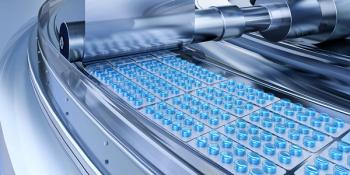
Equipment and Processing Report
- Equipment and Processing Report-03-16-2011
- Volume 0
- Issue 0
An Exhausting Emulsion
We are making an emulsion using a high-shear in-line mixer. It?s a 60-gal batch, and it?s taking nearly an hour to get the results we?re looking for. We have tried changing the in-line mixer?s workheads to a two-stage configuration, but it doesn?t affect the mixing time. Where are we going wrong?
Q: We are making an emulsion using a high-shear in-line mixer. First we prepare the aqueous phase, which includes an emulsifying agent and the active ingredient. Then we add the discontinuous phase, which comprises organic solvents and a monomer, to the vessel, and the in-line mixer is used in a recirculation line to form the emulsion. It’s a 60-gal batch, and it’s taking nearly an hour to get the results we’re looking for. We have tried changing the in-line mixer’s workheads to a two-stage configuration, but it doesn’t affect the mixing time. Where are we going wrong?
A: If you’re adding the discontinuous phase to the aqueous phase in the vessel, the chances are that your in-tank agitation is the problem. The agitator blades are probably positioned near the base of the vessel, which is running fairly slow to avoid aeration because oxidation can damage the active ingredient. But as you add the discontinuous phase and the liquid level rises in the vessel, the agitator won’t be capable of premixing the two phases. Instead, the in-line mixer is drawing the aqueous phase from the bottom of the vessel and recirculating it back into the top, while the solvents remain on the surface. Switching to a two-stage in-line mixer will increase shear, but not solve the problem, as you experienced. The ideal way to prepare an emulsion of this sort is to add the discontinuous phase to the recirculation loop through a manifold just before the in-line mixer, so that both phases are mixed on contact in the mixer’s high-shear zone. However, if you have to add the two phases to each other in the vessel, make sure the in-tank agitator is premixing them properly. Speeding it up as the liquid level rises to maintain the required in-tank movement should allow it to form a rough premix. The in-line mixer will then be able to subject this premix to intense shear and reduce the droplet size to form a finely dispersed, stable emulsion more quickly.
—Peter Matthews, technical manager of Silverson Machines
If you have a problem with your equipment or process, an industry expert may have the solution. Please send your question to
Articles in this issue
over 14 years ago
In-House Nitrogen Generation Can Enhance Safety and Decrease Costsover 14 years ago
The Rise of In-Line BlendingNewsletter
Get the essential updates shaping the future of pharma manufacturing and compliance—subscribe today to Pharmaceutical Technology and never miss a breakthrough.





